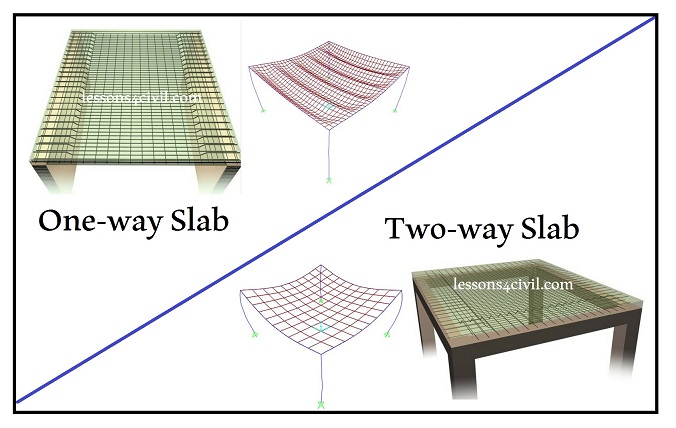One-way vs Two-way slabs
One-ways and two-way slabs are two technical terms that usually confuse students. As you know we always assume many simplifications assumptions to make our analysis less complex and reduce the computational expenses. However load always distributes in all directions but under certain conditions the share of one direction might be insignificant. In such cases we can ignore it. This scenario is the basic idea of dividing slabs into 2 categories based on their load propagation pattern.
One-way slabs:
According to the results of several researches, if the ratio of longer span to shorter span is equal or more than two, floor loads are mainly distributed along the larger span. As a result, in such cases we consider that the load is only supported by beams of the shorter spans.
Regarding this load distribution we can design the main reinforcement in the transverse direction which is practical to construct a Verandah slab.
Two-way slabs:
On the other hand, if the ratio of longer span to shorter span is less than two, the load is distributed along both directions. Most of floors in a multi-story building are two-way slabs.
Important points
- A two-way slab is supported by 4 beams while a one way slab transfer the loads to only 2 beams. In other words loads in a 2-way slab is carried along only one direction. .
- the main reason that causes these different load distributions is the ratio of Longer span to shorter span.
- whether you design if manually or using ETABS, the design of one-way slab is totally different from two-way slabs.
In future articles I will show you how to design a concrete slab manually.



Comments